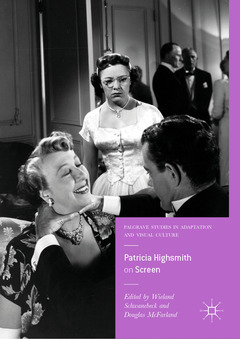Description
Patricia Highsmith on Screen, Softcover reprint of the original 1st ed. 2018
Palgrave Studies in Adaptation and Visual Culture Series
Language: English
Keywords
noir; adaptation; queer; murder; cinema; modernist; Carol; Strangers on a Train; mystery; book
Publication date: 01-2019
Support: Print on demand
Publication date: 10-2018
Support: Print on demand
Description
/li>Contents
/li>Biography
/li>Comment
/li>
This book is the first full-length study to focus on the various film adaptations of Patricia Highsmith?s novels, which have been a popular source for adaptation since Alfred Hitchcock?s Strangers on a Train (1952). The collection of essays examines films such as The Talented Mr. Ripley, The Two Faces of January, and Carol, includes interviews with Highsmith adaptors and provides a comprehensive filmography of all existing Highsmith adaptations. Particular attention is paid to queer subtexts, mythological underpinnings, philosophical questioning, contrasting media environments and formal conventions in diverse generic contexts. Produced over the space of seventy years, these adaptations reflect broad cultural and material shifts in film production and critical approaches to film studies. The book is thus not only of interest to Highsmith admirers but to anyone interested in adaptation and transatlantic film history.
Constitutes the first volume on Patricia Highsmith adaptations
Contains discussions of prolific film directors, including Alfred Hitchcock, Todd Haynes, Wim Wenders, Liliana Cavani, Claude Chabrol
Includes statements from artists who have adapted Highsmith




